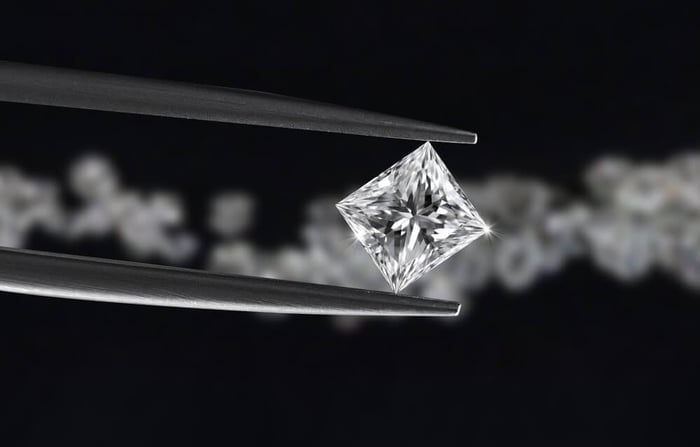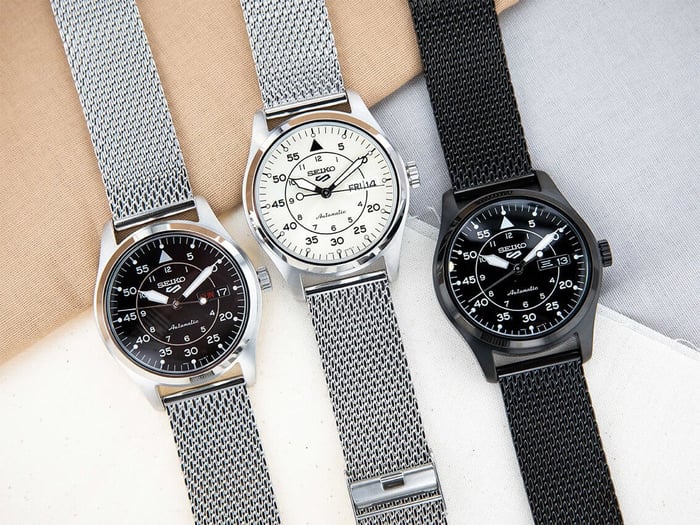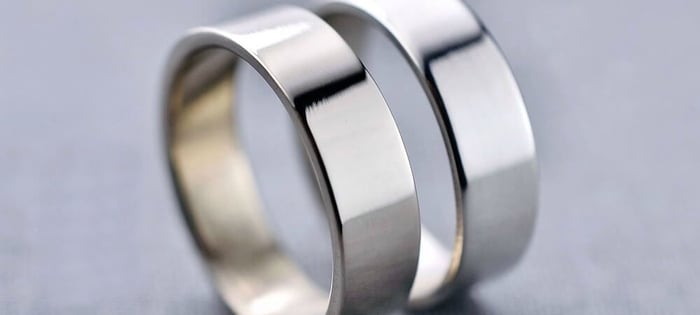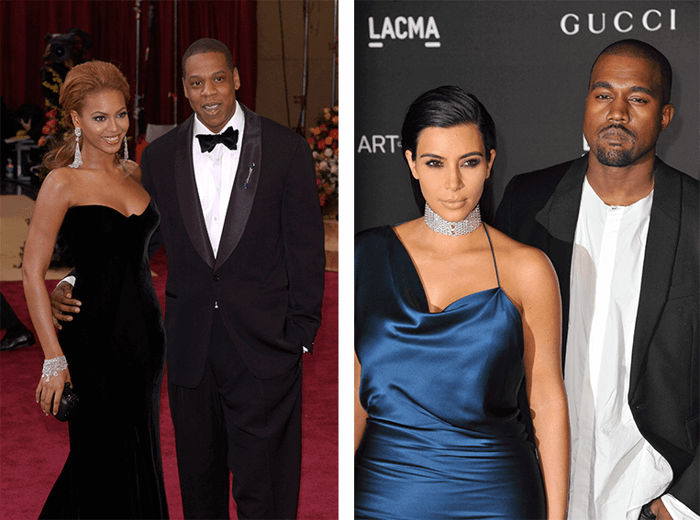Buying a diamond is a big commitment. It’s a magical moment, no doubt, to hold a real diamond in your fingers and watch it shimmer and sparkle — but you need to know that you’ve got what you paid for.
Let us ease your worry though, if you buy from a reputable retailer there’s really no reason to question if your diamond is fake. Selling fake gemstones is not a good business model, after all. Most diamond jewellery you find is going to be the real deal.
If you have bought a diamond that doesn’t quite seem right, or have found an old piece that you’re unsure about, you can try a few tests to alleviate your suspicion. Similar stones like moissanite and cubic zirconia do have a similar appearance to diamonds, but their chemical and physical differences can be distinguished.
Read on to find out how to tell if a diamond is real.
Overview:
5 Ways To Tell If A Diamond Is Real
One of the best things you can do to test if your diamond is real is to take it to a gemologist. With professional equipment (and professional experience), you can be sure that a gemologist will give you a definitive answer. Unfortunately, the process can cost money and time. If you want to test your gemstone from home, you can do it quickly and easily using one of these methods.
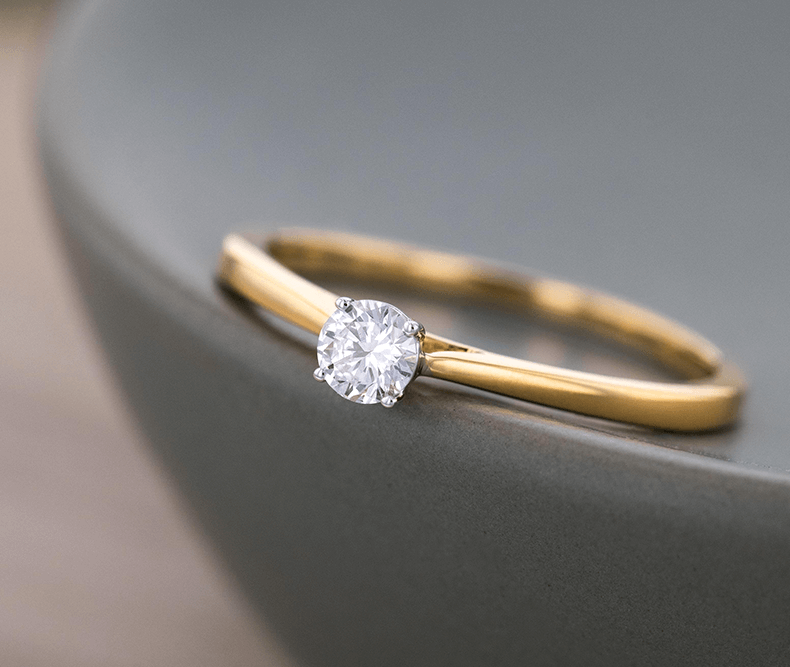
1. Fog Test
This method is best for diamond rings and jewellery that can be tested using the water test. This time, you’ll need to hold your diamond piece between your fingers, and gently breathe out onto the stone. A real diamond should only fog up for a moment before the cloudiness disappears. A fake diamond will take more than a few seconds to clear up.
The fog won’t last long on a real diamond as it will dispel heat almost instantaneously. For this test to work effectively, you should make sure the surface of your stone has been cleaned.
2. Scratch Test
This method is much easier and safer with a loose diamond, but could theoretically be done with a diamond earring or ring. Essentially, the scratch test is used to test the hardness of your stone. Because the diamond is the hardest gemstone on the planet, it should easily be able to scratch your testing surface of glass.
If your gemstone cannot scratch glass, it’s a fake. It’s possible to damage your diamond or stone with this test, which is why you should use the bottom point of the gemstone or avoid it altogether if you can spot major flaws and inclusions. Keep in mind that zircon and quartz are also able to scratch glass, so while your stone might be a proper gemstone, this test doesn’t prove it’s a diamond.
3. Water Test
This test will require a loose diamond. You’ll simply need to fill up a clear glass with water, and gently drop your stone into the glass. If your diamond is real, it will sink to the bottom of the glass. This is because of the density and weight of real diamond gemstones. If it floats, it’s likely glass or another soft material. Keep in mind that most other gemstones are dense enough to sink, which means this method is best at testing whether your stone is a gemstone at all. Overall, the water is great because it's so quick and easy, and you'll only need a glass of water.

4. Fire Test
This is the most dangerous test on our list, and one you should be extremely careful while undertaking. Fair warning, if your stone is not a real diamond, it may shatter in this process. You’ll need a glass of cold water, a lighter, and either some pliers or fire-resistant gear to hold your diamond in.
Use your lighter to heat the stone for around 30 seconds, and then drop it in cold water. A real diamond will not react, as it will disperse heat quickly, and its strong structure will stay intact. Cheaper non-diamond will likely shatter under the shock of temperature. Keep in mind a stone-like white sapphire will also not break.
5. UV Test
Under ultraviolet light, most diamonds will display a small amount of blue fluorescence. If you are able to get your hands on a black light, then you can give your gemstone a test. Keep in mind that like most of these tests, this isn't definitive proof of your diamond is real or fake. Some diamonds don’t have any fluorescence, which means you won’t always spot any blue colour under UV light. If you do find a colour change, however, you are most likely looking at a real diamond.
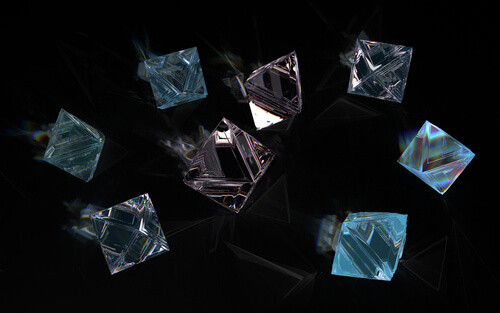
3 Ways To Identify A Raw Diamond
Before a diamond is cut and set in diamond necklaces or another form of beautiful jewellery, it appears in a considerably bigger raw form. It’s truly exciting to come across a raw gemstone, but at first glance, it can be difficult to understand exactly what it is.
Taking a raw stone to a gemologist or jeweller is the surefire way to identify a raw stone, but you can try a few other methods if you suspect you’ve found a raw diamond. One of the easiest ways to identify the stone relates to how diamonds are formed.
1. Crystal Formation
The quickest way to identify a diamond is through its shape. Raw diamonds form under immense heat and pressure, and the end result is an octahedral shaped crystal with eight faces.
Most commonly, raw quartz is mistaken for a diamond because of its colour, however, you can differentiate their formation. Quartz, in its complete form, will have many more faces than a simple diamond.
Keep in mind that not all raw diamond and quartz is kept fully intact. They can have varying shapes, as some of these fragments are billions of years old. Try counting the faces of the raw gemstone, and if that doesn’t help, try our next method.
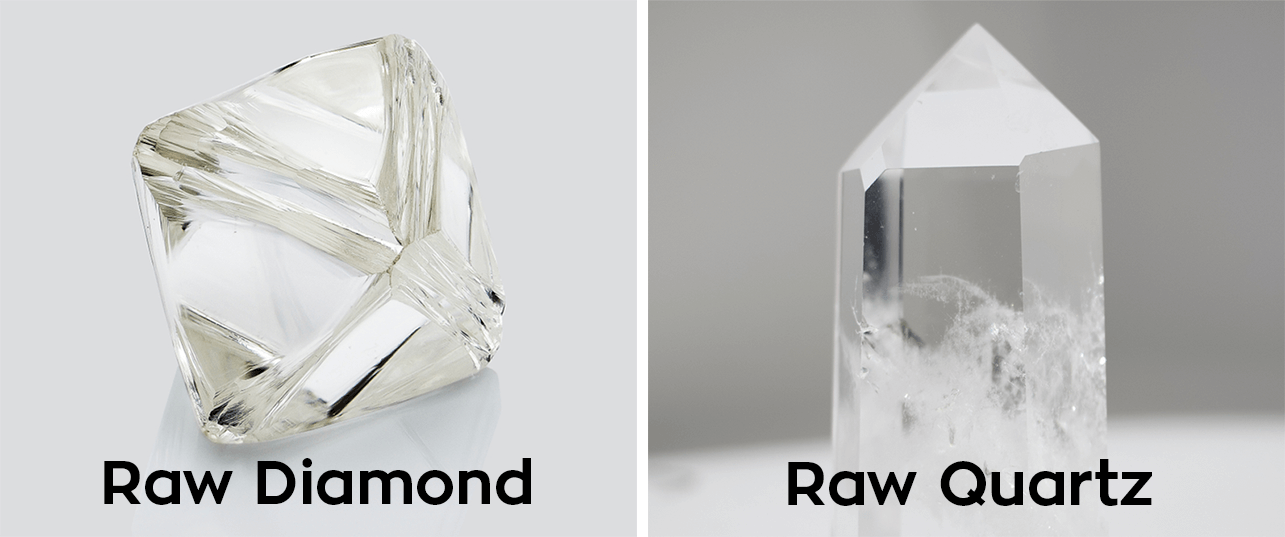
2. Location
Knowing where your stone came from goes a long way in figuring out its authenticity. Diamonds are mostly found in kimberlite pipes, which are created from deep volcanic eruptions. Generally, mines are built-in kimberlite rock, where large diamond deposits can be found. However, diamonds are rarely formed away from these sites, which means the geographical location your stone originates from is important.
Check a map to find how close you are to a diamond mine, or if kimberlite pipes are known to occur near your area. While not definitive, we’d be feeling pretty optimistic if we found a raw gemstone near an area known to house diamonds.
3. Testing
You can try several tests on your raw stone, similar to our suggestions for cut diamonds. You can try a gravity test with water, to see if your tone floats or sinks. A proper raw diamond will instantly sink.
You can also reattempt the scratch test, by scratching your stone on a plane of glass. If it doesn’t scratch the glass, it’s a much weaker stone than diamond. A true scratching test would use a surface of synthetic ruby or sapphire, as only a diamond would scratch it.
Perhaps most accurate is a thermal conductivity test. This is a small handheld device that will measure how heat transfers through the stone. As heat passes differently through a diamond compared to similar quartz or zirconia stones, the diamond tester will be able to identify the stone quickly. You might be able to buy or borrow one from a local jeweller.
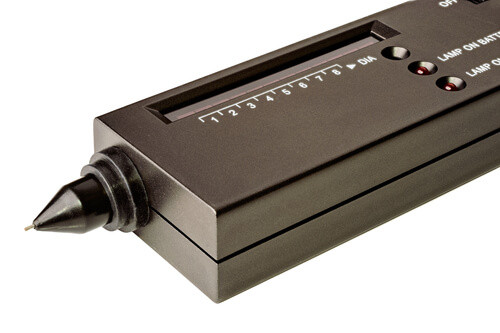
Final Suggestions
Hopefully, you’ve been able to try some of these tests from home and haven’t found any telltale signs of a fake diamond. As we’ve noted, it’s difficult to be certain you truly have a diamond without some proper equipment or the help of a professional. However, these tests will definitely put you in the right direction; and you can almost always trust reputable dealers to give you the real thing. We wish you all the best with your diamond inspection! Check out some of our favourite diamond jewellery below.
PRODUCT LIST FOR CATEGORY Diamonds

